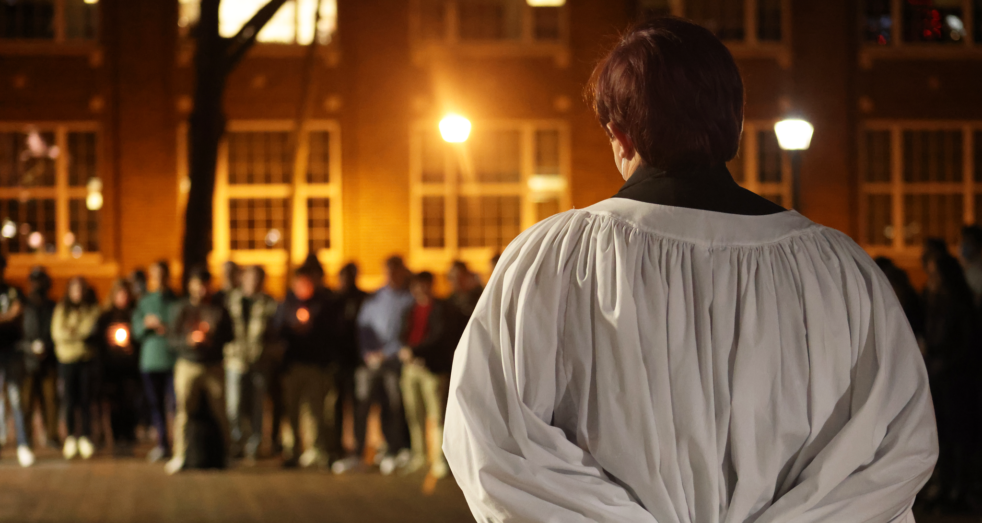The student body is a conglomeration of majors, backgrounds, interests and journeys; it represents the diversity that the Institute values and the possibilities brought forth by higher education focused on progress and service. The death of a student is a tragic event that rattles the campus community and serves as a time of mourning and reflection on bettering Institute policies to ensure student well-being.
The Institute’s formal policy regarding student death notification follows a concentric circle model, where information pertaining to the tragedy is only disseminated to students in the same major department, residence hall and organizations to which the student belonged. Tech’s policy change surrounding student death notification is centered around the appointment of Dr. Hong, the new Vice President for Student Engagement and Well-Being.
Dr. Hong’s new unit incorporates various divisions of Student Life and Campus Services in order to best inform student experience through the lens of mental health and well-being, along with diversity, equity and inclusion. In order to determine which communities should receive targeted communication, the Dean of Students Office Conducts an assessment of each student and considers their unique living-learning context during their time at Tech.
The primary justification surrounding the integration of the new model and policy for student death is a good-faith effort to reduce mental duress for students, especially those whose mental health could be further impacted by hearing of the loss of a student in the Tech community. Dr. Hong spoke further on this topic and said, “We are striving to align our practices with what the research has indicated are best practices. Efforts to reduce suicide contagion, promote psychological safety and engage in trauma-informed practices together guided us to refrain from a universal notification practice.”
Additionally, the Institute organizes an annual, “When the Whistle Blows” event to honor faculty, staff and students who have died in the past year. While remembrance events and notifications of student death to relevant circles are impactful, often students feel that they need a greater outlet for their grief. Secondary circles of friends and community members begin depending on the initial points of contact highlighted in the concentric circle model for news and information regarding the tragedy, which can create an unnecessary emotional burden for students who are navigating grief and mourning the loss of a loved one.
Samuel Ellis, the Undergraduate Student Body President, is spearheading a new student-led initiative for the Georgia Tech community to collectively grieve and honor students who have passed away. Ellis cautioned, “Georgia Tech doesn’t have a cover up culture, but it does have a move through culture. The new student death notification policy enacted by the administration can leave students in the dark about what’s happening and as a result, students’ relationship with the deceased student can feel invalidated.”
The loss of beloved second-year student, Jakob Martin, served as one of the catalysts for SGA’s new three-fold program at the start of the new year. With an unmet need for a formal way to communally mourn tragic events at the Institute, SGA’s new initiative focuses on sending emails to the entire student body for student death notifications. These emails are curated through collaboration with the Georgia Tech Counseling Center and the Center for Assessment, Referral, and Education (CARE) in order to ensure that the messages contain trigger warnings, are empathetic and do justice in highlighting the student’s life. When asked whether students close to the deceased student would have a part in writing the emails, Ellis emphasized, “The prerequisite to having a conversation about any student death is having parental consent, but from there, the process is very community-led.”
Furthermore, SGA has released a Vigil Request Form that invites students to initiate the process of organizing a vigil space and is continuing the tradition of authoring resolutions of condolences recognizing the deceased student’s involvements and legacy on the campus community.
As for future collaborations, Ellis said, “We are considering a relationship with an external community partner better equipped to honor a student’s memory than ourselves and will continue collaborating with GT CARE and Counseling.”
The SGA new student death notification policy complete with emails, vigils and resolutions of condolences will work in tandem with the Institute’s established concentric circle models in order to be as transparent as possible with the student body regarding student death.
Student well-being is the Institute’s utmost priority and equipping students with the proper resources to collectively mourn and honor a student’s life will be instrumental in creating a campus culture where students feel cared for and supported by their peers and surrounding community, especially in
times of grief.
